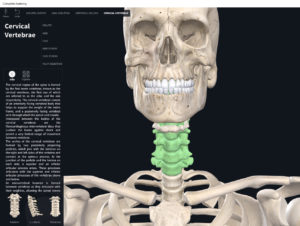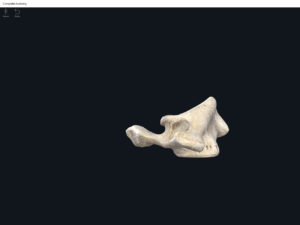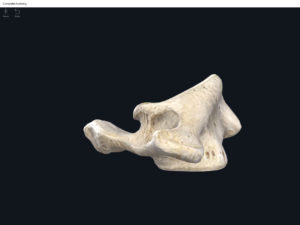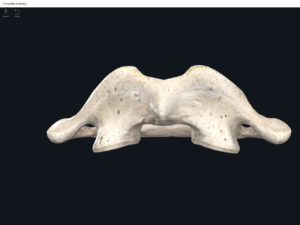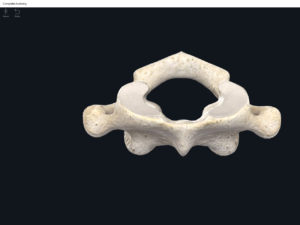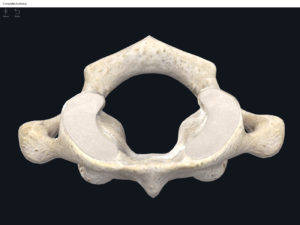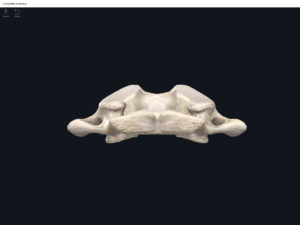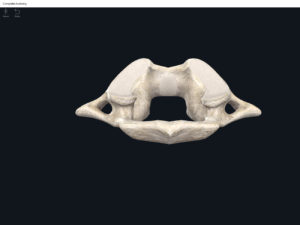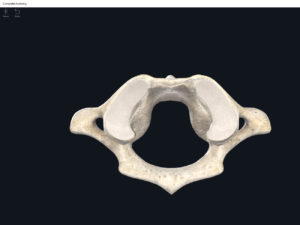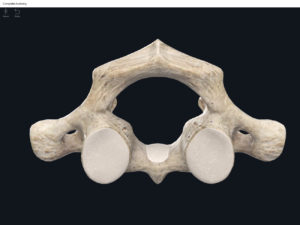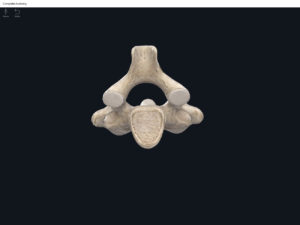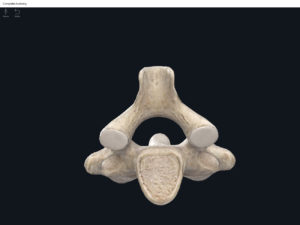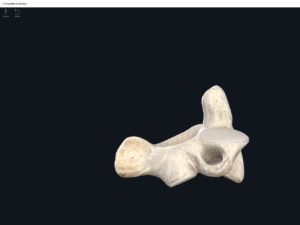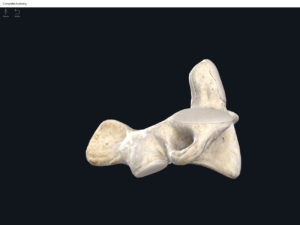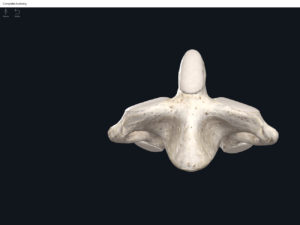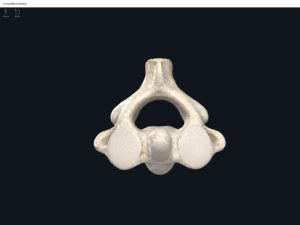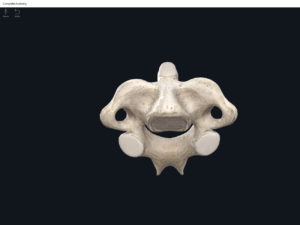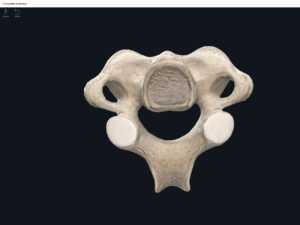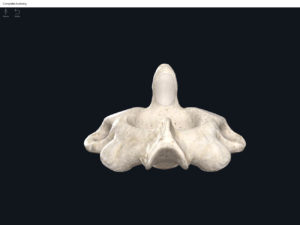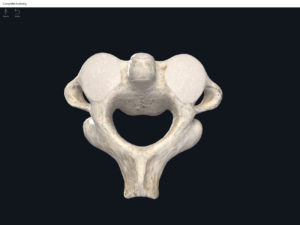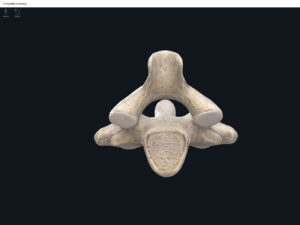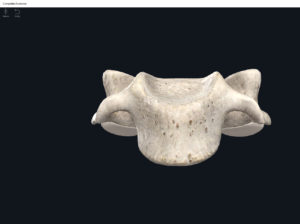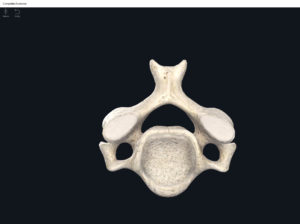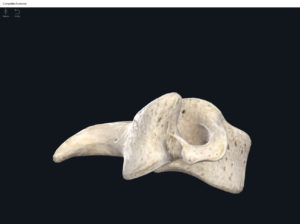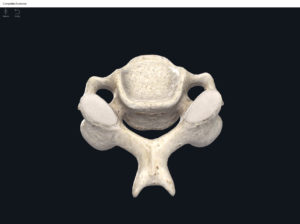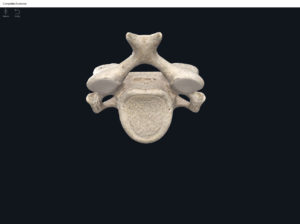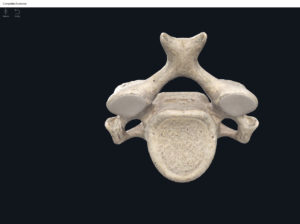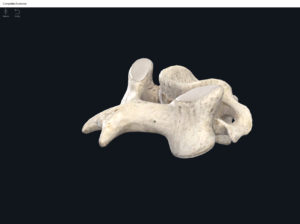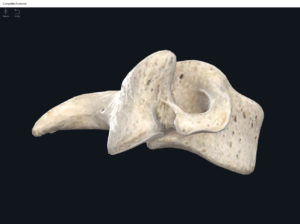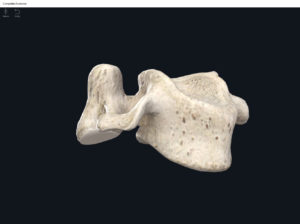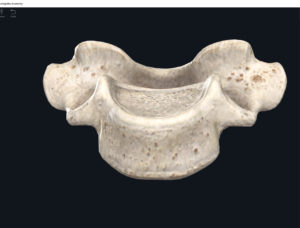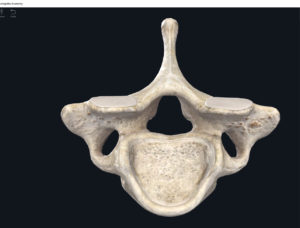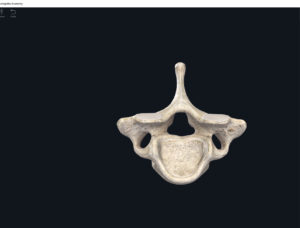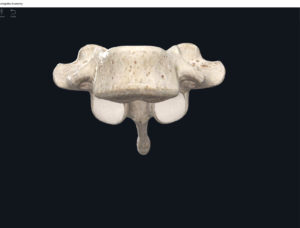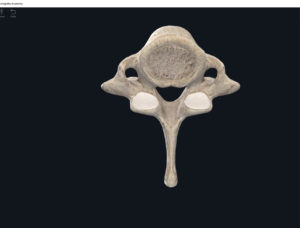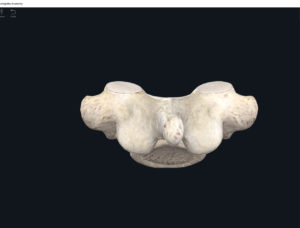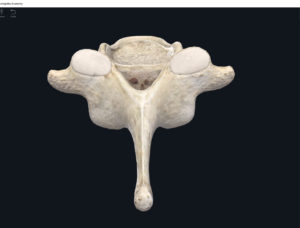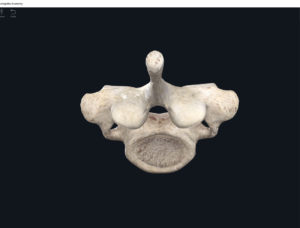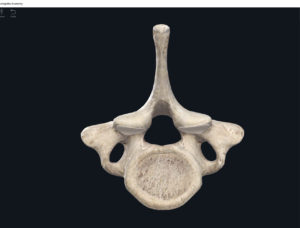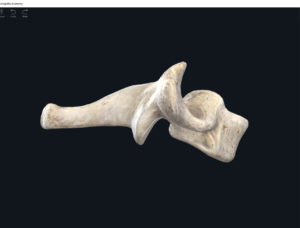Anatomy & Physiology: Bones—Vertebral Column, Cervical Region.
Structure.
- Cervical vertebrae: C1 (atlas), C2 (axis), C3-C7. (Remember breakfast at 7). C7 known as the vertebral prominens as it distinctly protrudes at the base of the neck at the transition to the thoracic vertebrae.
- Except for the sacrum, the cervical vertebrae are smaller than the thoracic and lumbar vertebrae.
- All cervical vertebrae have 3 foramina: vertebral (x1) and transverse (x2).
- The vertebral foramen is the largest (due to the enlargement of the spinal cord at top) as compared to the thoracic and lumbar vertebrae.
- The vertebral artery passes through the transverse foramina.
- Spinous processes of C2-C6 are often bifid (split into two small processes at the terminal end) and slender.
- Small transverse processes.
- Superior facets: posterosuperior.
- Inferior facets: anteroinferior.
- C1 (atlas): supports head. Has no body and no spinous process. Ring-shaped with anterior and posterior arches. The superior portion have two superior articular facets which articulate with the occipital condyles (allows for the head to nod “yes”). The inferior articular facets articulate with C2. The anterior portion articulates with the dens (tooth-like projection) of C2 and this complex allows for the turning of the head (like turning the head to say “no”).
- C2 (axis): the superior articular facets articulate with C1; the inferior articular facets articulate with C3. The dens is a peg/tooth-like projection that articulates with the anterior portion of C1 and allows the head to turn (as if to say “no”).
- C7 (vertebra prominens): has a very prominent spinous process (non-bifid) that may be felt/palpated. The spinous process C7 makes sense as it is a transition from the cervical to the thoracic vertebrae.
Function.
Clinical Significance.
References
Biel, A. (2015). Trail guide to the body: A hands-on guide to locating muscles, bones and more.
Cedars-Sinai. (2018). Vertebrae of the spine. Retrieved from https://www.cedars-sinai.org/health-library/diseases-and-conditions/v/vertebrae-of-the-spine.html
Jenkins, G., & Tortora, G. J. (2012). Anatomy and Physiology: From Science to Life, 3rd Edition International Stu. John Wiley & Sons.
Muscolino, J. E. (2017). The muscular system manual: The skeletal muscles of the human body.




